Mid-Century Modern Meets Wabi-Sabi: A Perfect Fusion
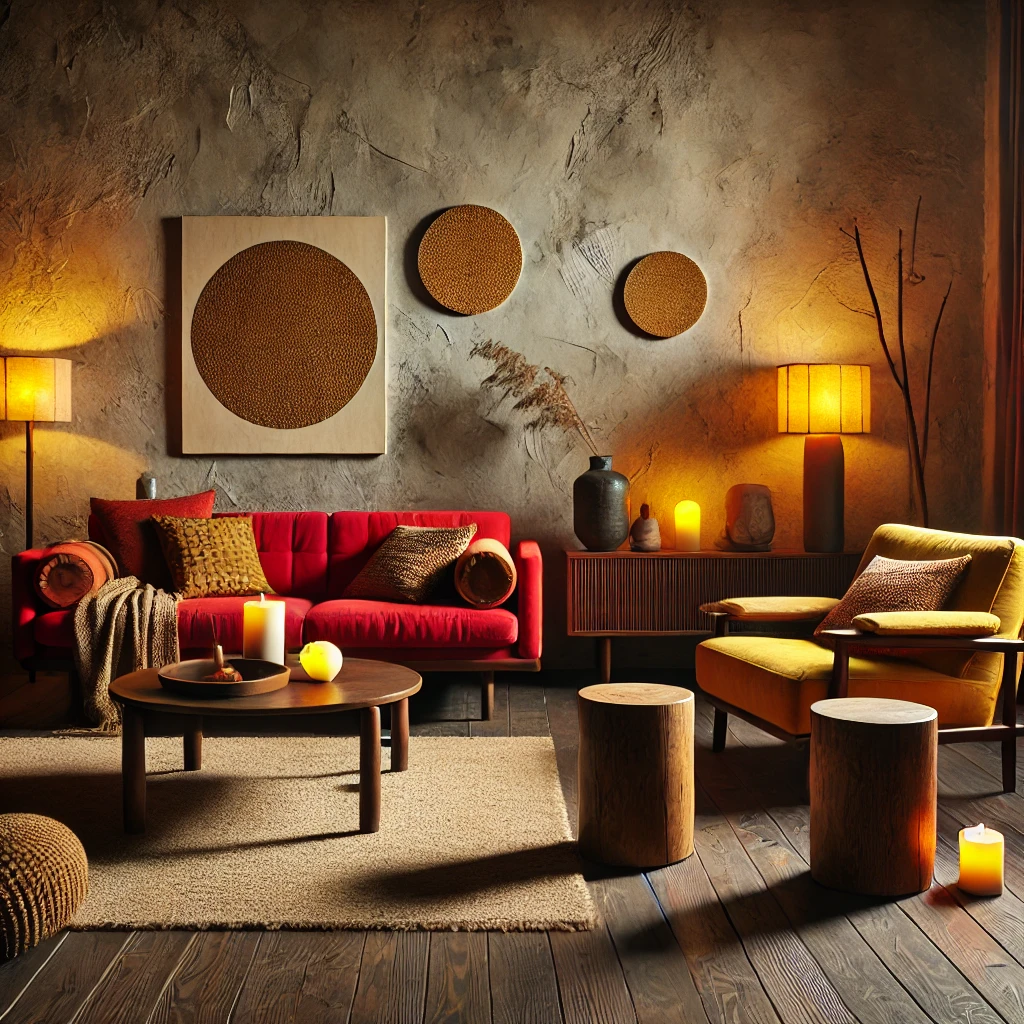
Mid-century modern design and Wabi-Sabi may seem like two very different worlds—one is rooted in the clean lines and organic forms of post-1940s design, while the other embraces imperfection, raw textures, and the beauty of the unfinished. Yet, when brought together, these styles create something truly soulful. The balance of precision and imperfection, modernity and organic simplicity, results in spaces that are not just visually striking but also deeply comforting.
Blending these two aesthetics isn’t about following rigid rules; it’s about allowing their contrasts to coexist in harmony. It’s where clean-lined furniture meets textured plaster walls and where bold retro colors mingle with soft, muted tones to form a timeless, moody home.
What is Mid-Century Modern Design?
Born out of a desire for function and simplicity after World War II, mid-century modern design became known for its minimal forms, natural materials, and bold color palettes. It’s a celebration of clean geometry and organic influences, with furniture that is as sculptural as it is functional.
Think of Danish teak sideboards, the iconic Eames Lounge Chair, or vintage lighting in brass and chrome finishes. Key materials like wood, leather, and stone dominate this style, while retro hues such as mustard yellow, burnt orange, and olive green bring warmth and personality.
This aesthetic remains a timeless choice, but when paired with the rustic, imperfect beauty of Wabi-Sabi, it takes on an even deeper dimension.
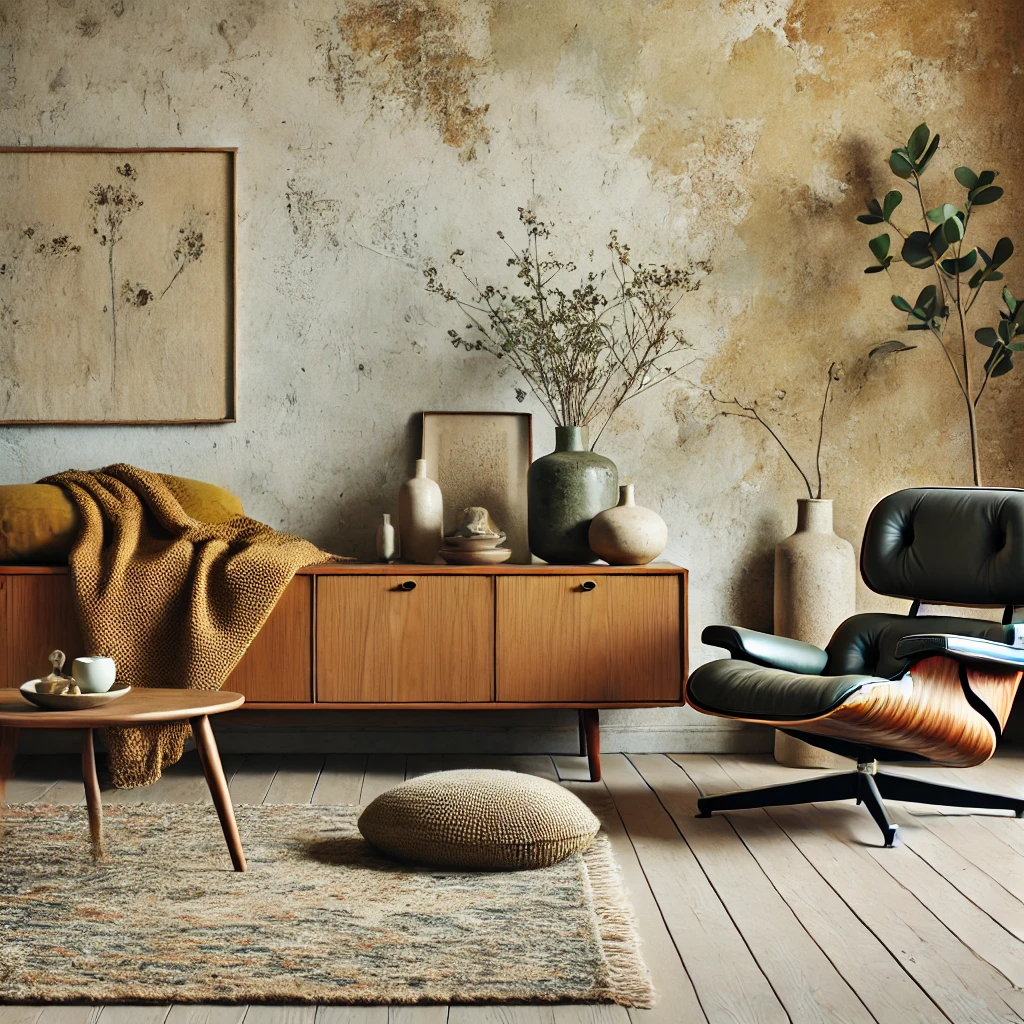
Understanding Wabi-Sabi
At its core, Wabi-Sabi is about finding beauty in the imperfect, the incomplete, and the natural. It celebrates the organic textures of weathered wood, the softness of handmade ceramics, and the rough edges of stone surfaces.
Wabi-Sabi interiors are never over-polished or contrived. Instead, they embrace asymmetry, raw materials, and a muted palette that feels grounded and serene. In a world obsessed with perfection, Wabi-Sabi reminds us that true beauty lies in authenticity and imperfection.
When paired with mid-century modern elements, Wabi-Sabi softens the clean lines, adding texture and soul to what could otherwise feel too sleek.
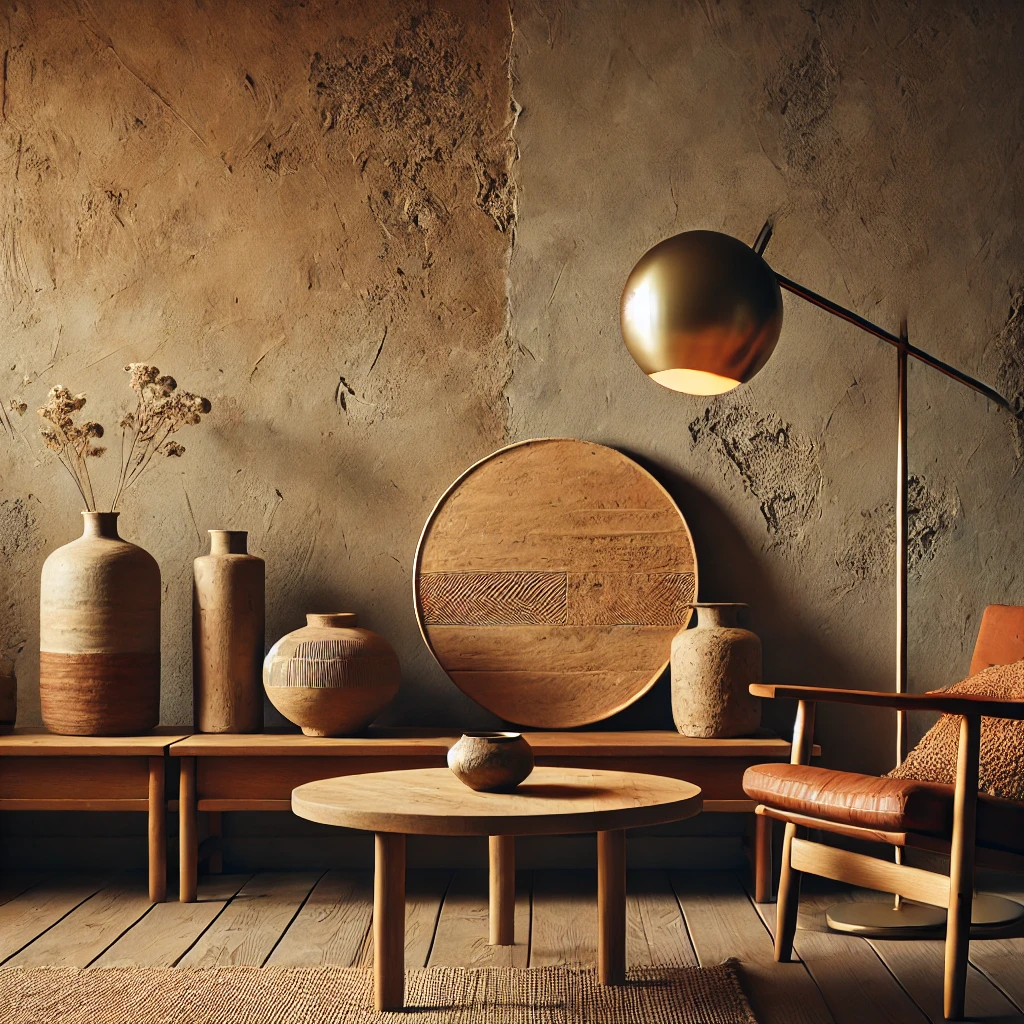
Blending the Two Styles
The key to merging mid-century modern with Wabi-Sabi is balance. It’s not about forcing the styles together but about allowing each one to enhance the other.
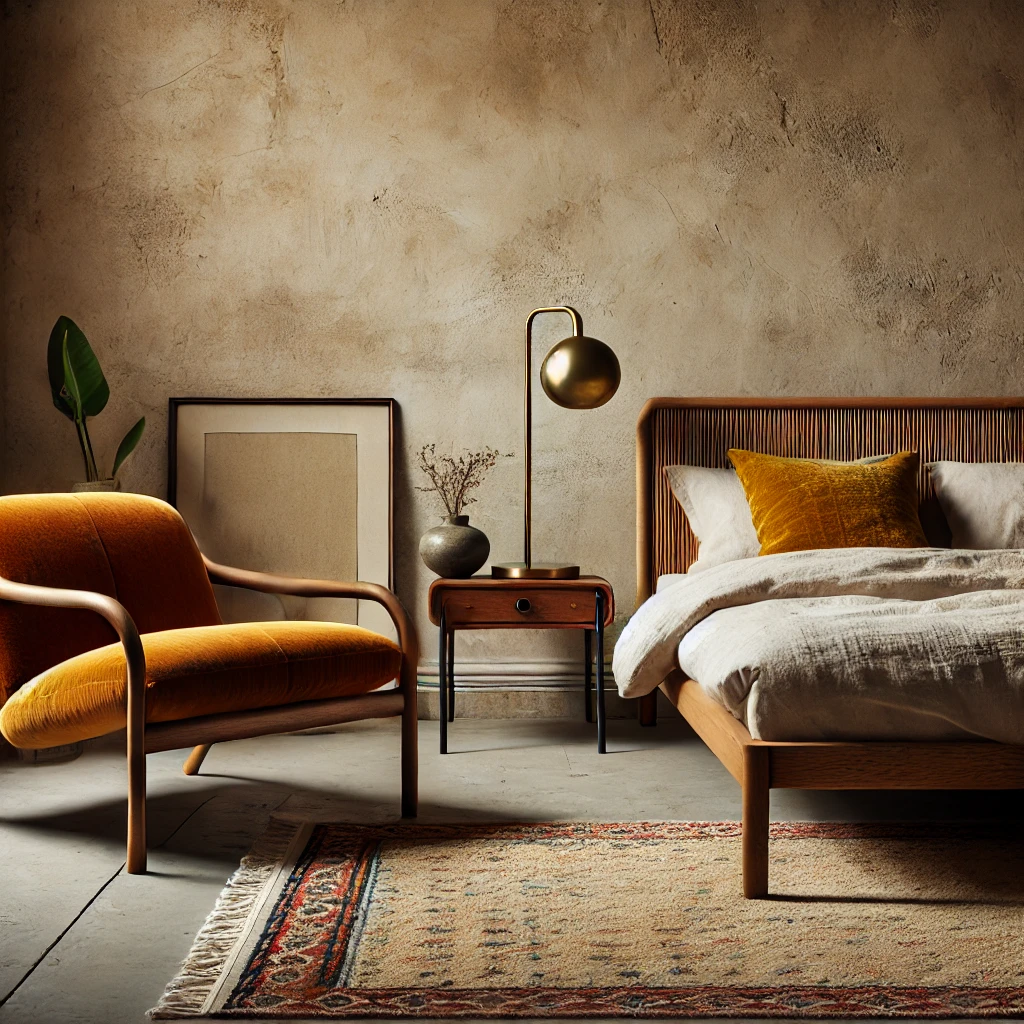
Furniture Choices:
Start with timeless mid-century pieces—like a velvet armchair or a low-profile sofa—and layer them with Wabi-Sabi-inspired decor such as hand-thrown ceramics and rustic wood stools. This creates an intentional yet lived-in feel.
Color Palette:
Stick to a neutral base, but don’t be afraid to introduce retro pops of color. Muted tones of beige, gray, and off-white can be punctuated by burnt orange, olive green, or mustard yellow to add depth and warmth.
Textures and Materials:
Mid-century modern design brings clean finishes, but Wabi-Sabi adds softness and texture. Think unfinished wood, stone, and natural fibers like linen and wool for a tactile experience. Layered lighting—vintage floor lamps combined with soft ambient light—completes the look.
Must-Have Elements for a Fusion Space
To bring this aesthetic to life, focus on a combination of essential pieces:
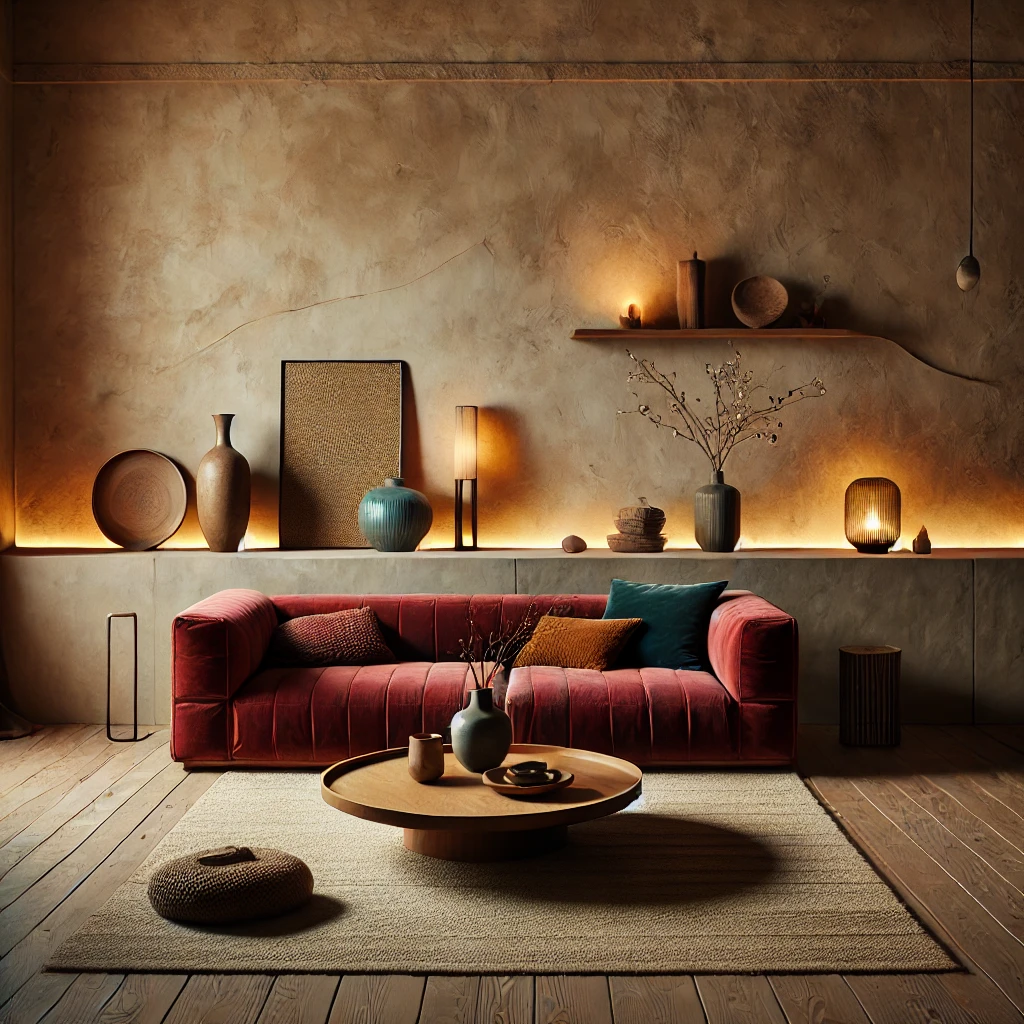
Mid-Century Modern:
• Eames Lounge Chair or other vintage-style seating
• Danish teak sideboards for storage
• Statement vintage lighting in warm metal finishes
Wabi-Sabi Accents:
• Hand-thrown ceramics with imperfect edges
• Weathered wood tables or stools
• Natural fiber rugs with subtle textures
When carefully curated, these elements create spaces that feel warm, grounded, and full of character.
Conclusion
The beauty of blending mid-century modern with Wabi-Sabi is that it feels timeless yet deeply personal. It’s a style that evolves with you, where every object tells a story and every detail adds meaning.
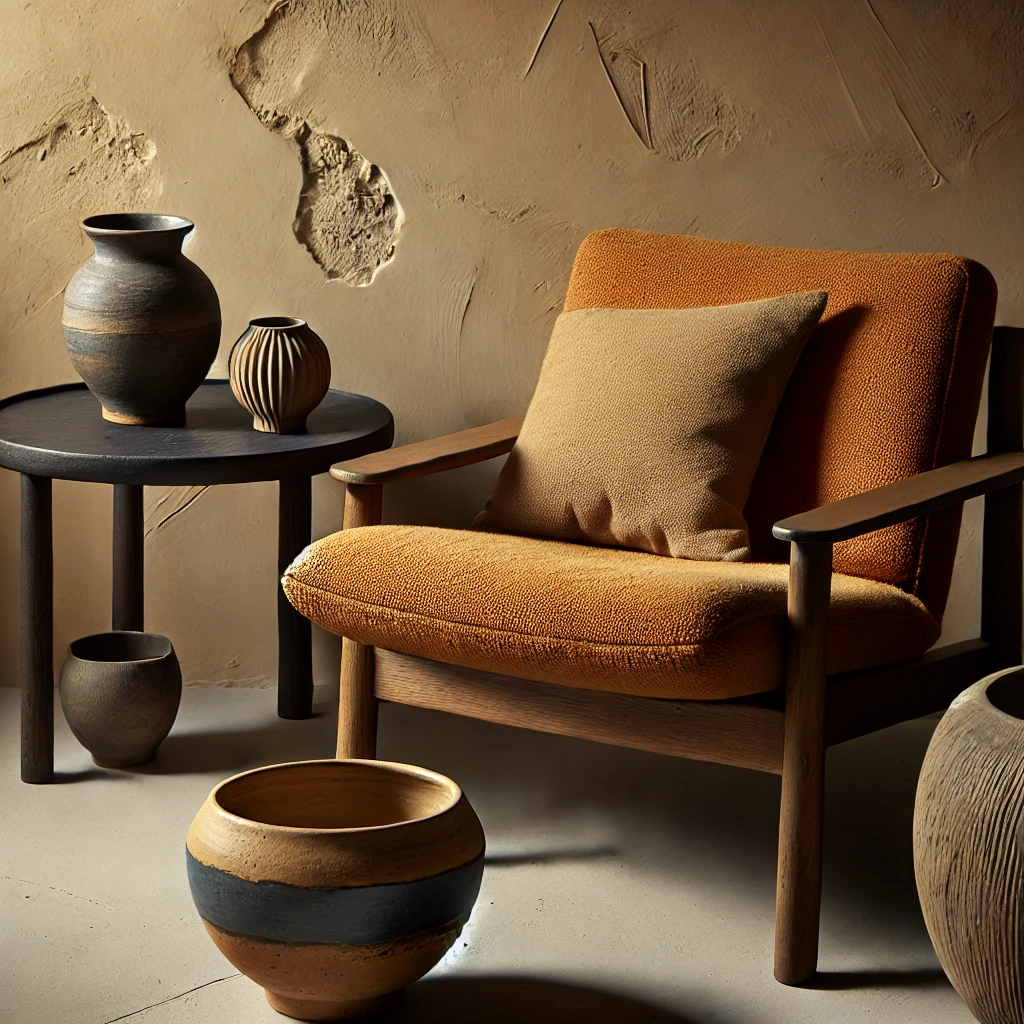
Want more inspiration? Explore The Archive for soulful spaces, or join The Dispatch for weekly updates and design tips.
February 11, 2025
Mid-Century Modern Meets Wabi-Sabi: A Perfect Fusion
A COLLECTION OF INSPIRATION
WHERE NATURE-INSPIRED ARCHITECTURE AND DESIGN TAKE CENTER STAGE. THIS IS A SPACE FOR THOSE WHO SEEK KNOWLEDGE, RAW BEAUTY, ORGANIC MATERIALS, AND THE ART OF THE WILD AND UNPREDICTABLE. CELEBRATING CREATIVE MINDS, INNOVATIVE SPACES, AND A PASSION FOR LOVE, NATURE, AND BOUNDLESS IMAGINATION.
search the archive
Search by category
global design
Before & Beyond
sustainability
narratives in design
Design Insights
shared spaces
create & craft
Inspired Designs
the archive
Mid-Century Modern Meets Wabi-Sabi: A Perfect Fusion

Mid-century modern design and Wabi-Sabi may seem like two very different worlds—one is rooted in the clean lines and organic forms of post-1940s design, while the other embraces imperfection, raw textures, and the beauty of the unfinished. Yet, when brought together, these styles create something truly soulful. The balance of precision and imperfection, modernity and organic simplicity, results in spaces that are not just visually striking but also deeply comforting.
Blending these two aesthetics isn’t about following rigid rules; it’s about allowing their contrasts to coexist in harmony. It’s where clean-lined furniture meets textured plaster walls and where bold retro colors mingle with soft, muted tones to form a timeless, moody home.
What is Mid-Century Modern Design?
Born out of a desire for function and simplicity after World War II, mid-century modern design became known for its minimal forms, natural materials, and bold color palettes. It’s a celebration of clean geometry and organic influences, with furniture that is as sculptural as it is functional.
Think of Danish teak sideboards, the iconic Eames Lounge Chair, or vintage lighting in brass and chrome finishes. Key materials like wood, leather, and stone dominate this style, while retro hues such as mustard yellow, burnt orange, and olive green bring warmth and personality.
This aesthetic remains a timeless choice, but when paired with the rustic, imperfect beauty of Wabi-Sabi, it takes on an even deeper dimension.

Understanding Wabi-Sabi
At its core, Wabi-Sabi is about finding beauty in the imperfect, the incomplete, and the natural. It celebrates the organic textures of weathered wood, the softness of handmade ceramics, and the rough edges of stone surfaces.
Wabi-Sabi interiors are never over-polished or contrived. Instead, they embrace asymmetry, raw materials, and a muted palette that feels grounded and serene. In a world obsessed with perfection, Wabi-Sabi reminds us that true beauty lies in authenticity and imperfection.
When paired with mid-century modern elements, Wabi-Sabi softens the clean lines, adding texture and soul to what could otherwise feel too sleek.

Blending the Two Styles
The key to merging mid-century modern with Wabi-Sabi is balance. It’s not about forcing the styles together but about allowing each one to enhance the other.

Furniture Choices:
Start with timeless mid-century pieces—like a velvet armchair or a low-profile sofa—and layer them with Wabi-Sabi-inspired decor such as hand-thrown ceramics and rustic wood stools. This creates an intentional yet lived-in feel.
Color Palette:
Stick to a neutral base, but don’t be afraid to introduce retro pops of color. Muted tones of beige, gray, and off-white can be punctuated by burnt orange, olive green, or mustard yellow to add depth and warmth.
Textures and Materials:
Mid-century modern design brings clean finishes, but Wabi-Sabi adds softness and texture. Think unfinished wood, stone, and natural fibers like linen and wool for a tactile experience. Layered lighting—vintage floor lamps combined with soft ambient light—completes the look.
Must-Have Elements for a Fusion Space
To bring this aesthetic to life, focus on a combination of essential pieces:

Mid-Century Modern:
• Eames Lounge Chair or other vintage-style seating
• Danish teak sideboards for storage
• Statement vintage lighting in warm metal finishes
Wabi-Sabi Accents:
• Hand-thrown ceramics with imperfect edges
• Weathered wood tables or stools
• Natural fiber rugs with subtle textures
When carefully curated, these elements create spaces that feel warm, grounded, and full of character.
Conclusion
The beauty of blending mid-century modern with Wabi-Sabi is that it feels timeless yet deeply personal. It’s a style that evolves with you, where every object tells a story and every detail adds meaning.

Want more inspiration? Explore The Archive for soulful spaces, or join The Dispatch for weekly updates and design tips.
A COLLECTION OF INSPIRATION
WHERE NATURE-INSPIRED ARCHITECTURE AND DESIGN TAKE CENTER STAGE. THIS IS A SPACE FOR THOSE WHO SEEK KNOWLEDGE, RAW BEAUTY, ORGANIC MATERIALS, AND THE ART OF THE WILD AND UNPREDICTABLE. CELEBRATING CREATIVE MINDS, INNOVATIVE SPACES, AND A PASSION FOR LOVE, NATURE, AND BOUNDLESS IMAGINATION.
Feb 11, 2025